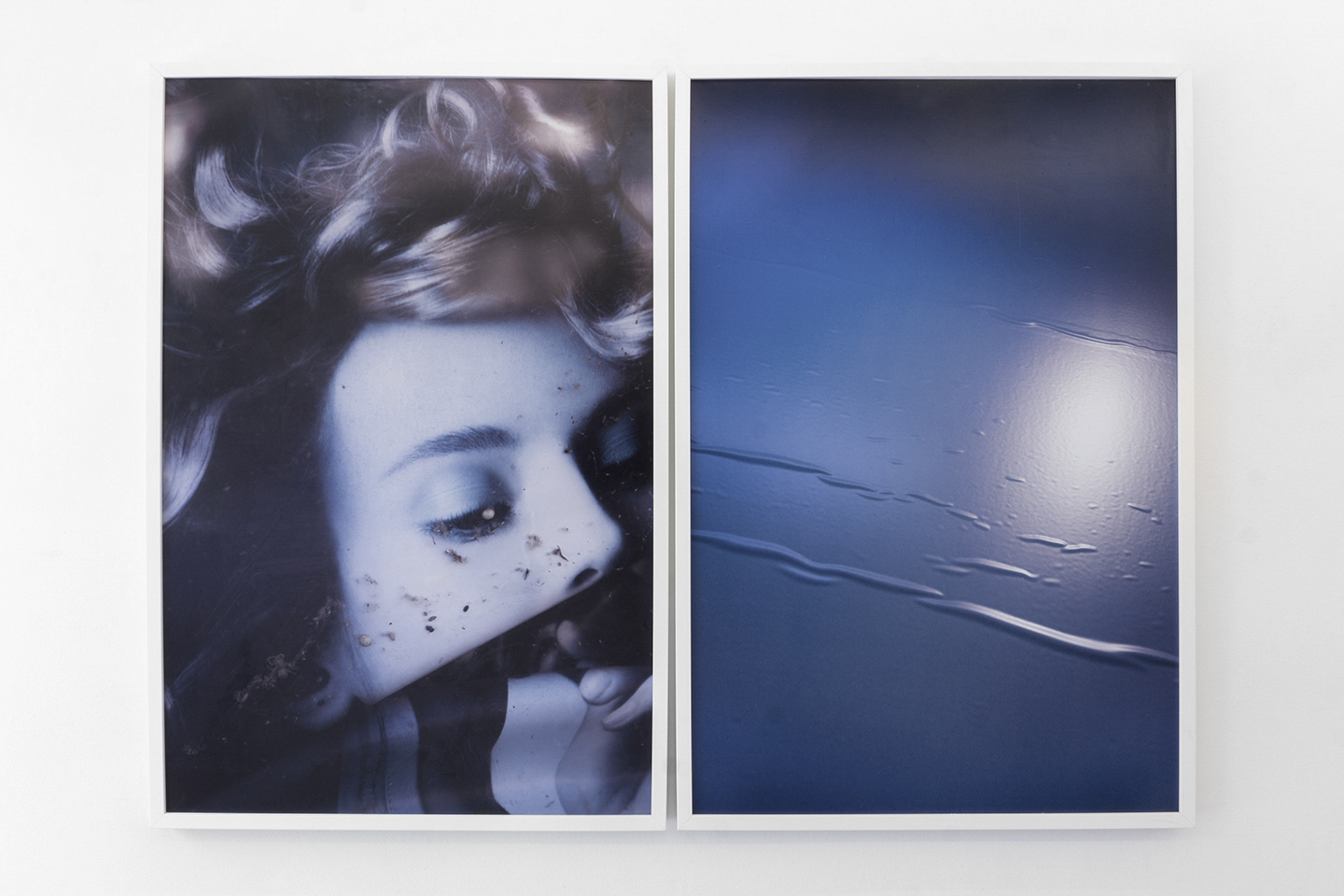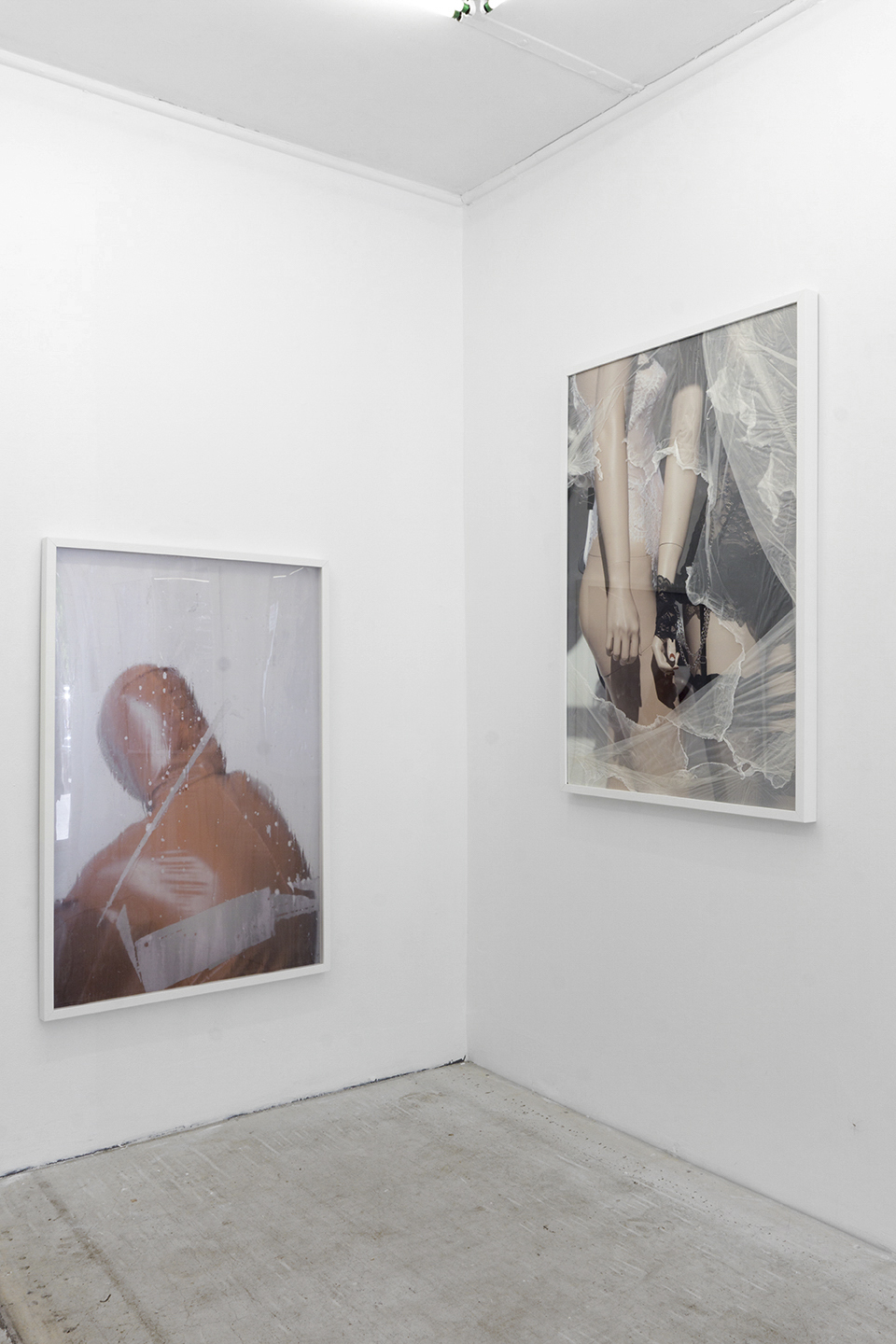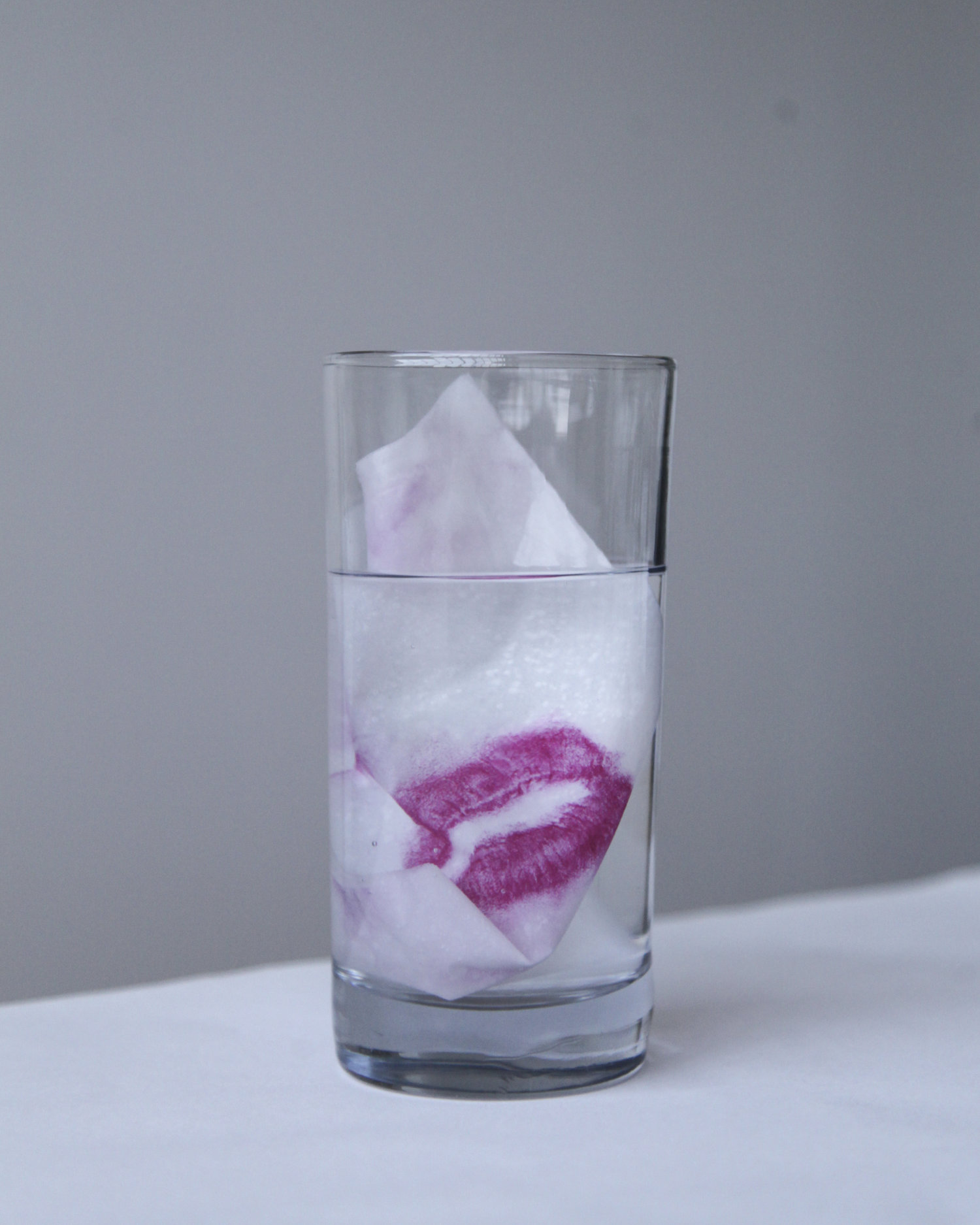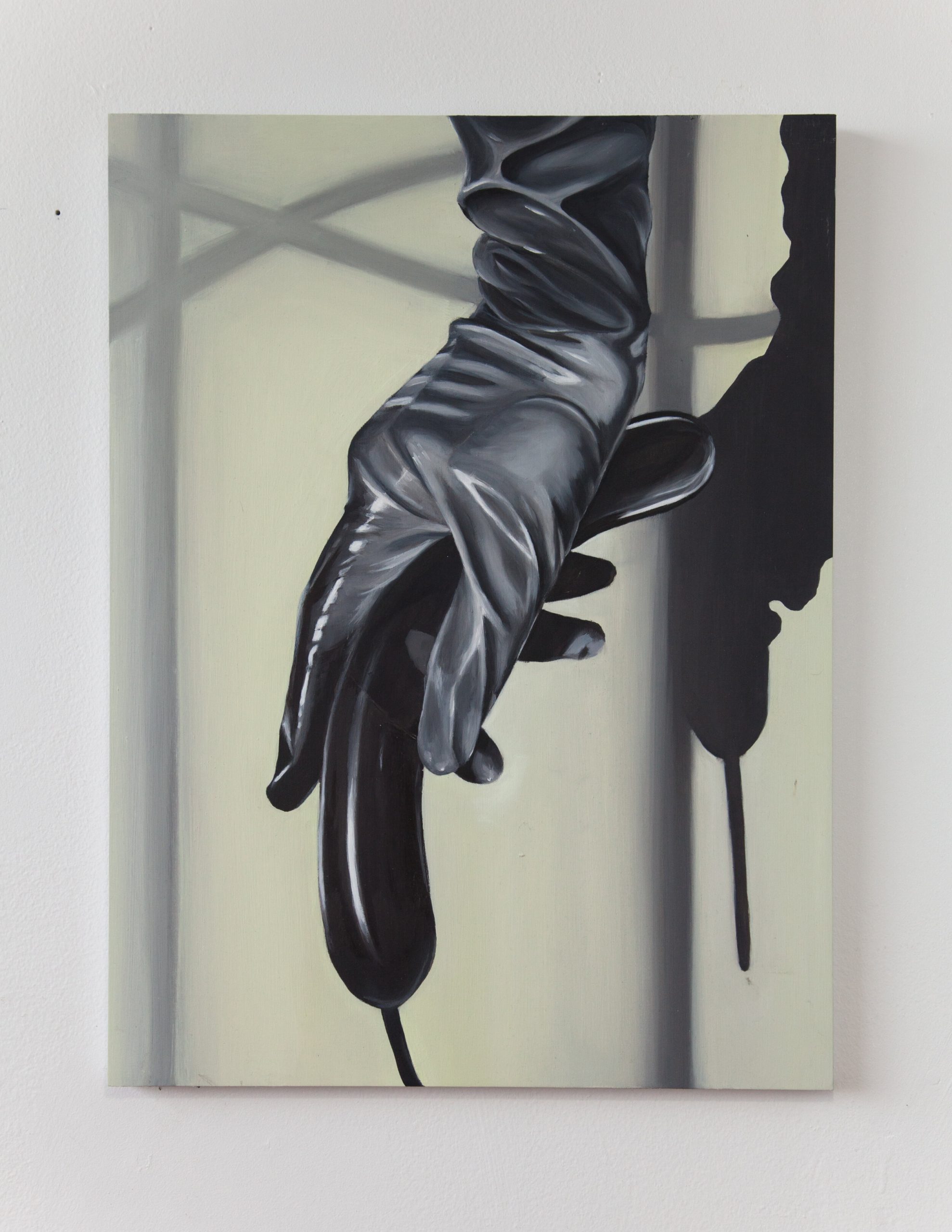Get Wet and Messy at The (Virtual) Table: Brittany Shepherd in Conversation

Kiarrah L. Beverly: I’d like to start by thanking you, Brittany, for agreeing to this interview. Before we begin, can you please confirm your pronouns?
Brittany Shepherd: She / Her.
I thought it would be helpful if you could provide a bit of background information to situate our readers. How did you come to discover your love for art, and at what age did you realize you wanted to pursue an art career seriously?
Art has always been important to me. My mom says I acted like a fifty-year-old man as a child, solemnly referring to my drawings, crafts, and writing as “my makings.” I was a daydreamer, capable of entertaining myself for hours. I always got straight A’s in art, music, and writing, and bad grades in everything else. There wasn’t another path for me to take. I have always creatively explored many different mediums, such as turning my Sims game into an art project by utilizing the camera function to create elaborate screenplays, making movies with a friend’s parent’s VHS camera, or writing plays for my friends to perform.
You began painting as a child with your grandmother, Hester. Would you say your grandmother played a significant role in the development of your artistic practice, and can you explain how, if so?
My grandmother was a widowed artist, singer, and dancer. Her house was a 1960s time capsule, a haunted hoard of paintings, drawings, photographs, and costumes. I visited her every week, and we would draw and paint together. I can see her lessons on perspective and depth in my childhood drawings, like how the animals have these blocky 3D rectangular noses. She was a beautiful person who suffered from dementia due to Alzheimer’s, but art and song remained important to her until the end.

How did you learn to channel emotional frustrations into your art-making?
As a teenager in the mid-2000s, I struggled with mental health issues and transferred from my public high school to Inglenook—a small alternative arts school in an old historic building in Toronto, made up of about a hundred students. All the kids who ended up there were either too troubled, queer, or weird to function at regular schools. It was like the island of misfit teenagers. The school didn’t believe in hierarchy, and students helped create the curriculum. The faculty were all radical leftists of the ’60s and ’70s, so the courses available included Queer Theory, Women’s Studies (radical feminism), Indigenous Studies, Economics (anti-capitalism & Marxist theory), Art (Dadaist practice), War & Peace (American imperialism), Into The Woods (Jungian dream theory) … the list goes on. I was an oil painter at the time, living with my dad in his woodshop in an industrial warehouse space and working at an art supply store. I didn’t have any illusions about what going to an art school had in store for me as my coworkers, who were much older, gave me the bitter lowdown. My parents didn’t have the means to help me financially with school or rent, so I decided to move downtown and start working. It was pretty disorienting being spat out into the world with the knowledge I had accumulated at Inglenook, and I struggled. I learned to be resilient, strong, and trust my moral compass.

How was the transition from Inglenook to pursuing a higher degree?
By the time I started art school at OCAD University, I was twenty-two and willing to take on the student loans, knowing that being in school would afford me time to focus on my work and what I wanted to make. It was difficult to be in an institution with so much bureaucracy again. I began in Sculpture and Installation, but ended up studying Integrated Media, which was a strange umbrella program that seemed to be defined as anything that required electricity (the internet, filmmaking, video, animation, digital art, 3D printing, sound art, robotics). I found the professors in that program to be much more curious and up-to-date with contemporary issues. There was freedom for me to work independently, thinking critically about images, the internet.
Can you speak a bit about your current practice, both conceptually and methodologically? What is your thought process when conceiving your work?
I am interested in notions of private versus public: spatially, but also emotionally. There is a thread of melancholy in my work. My subjects are often shrouded; through the act of hiding, they reveal something about the presence of absence. I think it reflects my own psychological orientation in the world, feeling like an observer on the outside looking in, trying to uncover some deeper meaning to it all. In practice, there is this act of hunting and collecting, like an ethnographer or anthropologist, except without the ethical baggage, because I stay in my own lane. I’m always seeking ways to challenge my perception of things. It’s a coping strategy I’ve developed while working horrible dead-end jobs or feeling uninspired by my surroundings—a way to make things interesting for myself by looking closer and finding something meaningful in boredom and pain. A book that really spoke to me is Ordinary Effects by Kathleen Stewart, an ethnography of the ordinary in which she teases out the trickle-down effect of larger political issues and finds meaning in the banal, fueled by a genuine curiosity about the real world that you don’t often see in academic theorists. I see theory and philosophy as one single tool in my tool belt, and as a blue-collar girl, I do mean tool belt.

You move fluidly across different mediums such as photography, sculpture, film, and painting. How do you determine what medium is best suited to realize a given idea or project?
To me, artmaking is a search for the poetic. It’s a matter of asking myself, “What does (insert medium) do? What does (insert idea) need?” My work often deals with the materiality and behavior of images and how images are vulnerable to shifts in meaning, depending on the context. Even when I am working with sculpture or painting, I consider the potentials of the afterlife of the work. For example, images of my realistic hair soap sculptures in the gallery’s bathroom for my 2016 show at Roberta Pelan function as a disturbance among the exhibition documentation. I hope for my paintings to end up in the same digital communities that initially inspired them.

By digital communities, are you referring to the online fetish forums that inspired your most recent exhibition, Waltz of the Mired (2021)? Can you explain these fetish communities a bit more? How did you first start participating in these forums, and what inspired you to incorporate this imagery into your work?
I had been collecting these images and engaging with various online fetish forums for years. I loved the level of commitment they had to creating communities for themselves and selflessly sharing images with each other. Niche fetishes challenge our conceptions of sexuality and gender in a way that traditional definitions don’t really touch on. What is the orientation of someone who is attracted to balloons, or who sets fire to men’s workwear? The imagery also felt poetic to the times we are living in, and I wanted to find a way to incorporate this more directly in my work. I’ve always been interested in underground subcultures. But online, so many of my favorite images and videos were disappearing at such a rapid pace due to algorithmic censorship that marginalized the weird. This faultiness of digital archives—its vulnerability to erasure—instilled a sense of urgency in me to document and preserve them.
For example, Waltz of the Mired draws inspiration from online fetish communities devoted to WAM (Wet and Messy), which is the act of being doused in slime, mud, or food. Mud is a substance referenced in many different creation myths around the world, as the origin of human life. The act of trudging through mud in clothes struck me as an attempt to find salvation through humility. Slime, on the other hand, is an artificial substance, often synthesized out of toxic materials that never decompose, essentially the opposite of mud as an organic, life-giving substance, and the act of being doused in it feels like a metaphor for our own self-destruction. I was also thinking about slime in relation to late-stage capitalism: it absorbs all forms of resistance to power itself, and in doing so, grows even stronger.

How do you think this body of work fits within the history of painting?
I was looking at a lot of art from the Black Plague era, as well as the erotic paintings and sculptures of Pompeii, an ancient civilization wiped out by a volcano. Working on that show felt devotional. Painting comes naturally to me, and I see it as another form of image-making with a much more loaded history. The act of painting is a way for me to slow down the speed with which images circulate and to spend more time with a singular idea, seeing how it translates into paint, playing with it through alteration. I see these paintings as archives, documenting a world that is prone to disappearing.
You recently started The Table, a salon in your apartment where poets and writers can come to share their work. As a poet myself, I am particularly interested in the intersection between writing and visual art. A table made by your dad serves as a physical meeting point for the salon, inspired by a number of socially oriented moments in history, such as Allan Kaprow’s Happenings. Can you give more background about The Table?
I conceived of The Table when I got my place in a rent-controlled arts building. I had all this space for the first time in my life, and all I could think about was sharing it. My dad is a carpenter, and when we lived together in his industrial woodshop, we had this enormous piece of plywood covering the table saw that we would eat on and invite people to hang out on when they came over. I wanted something similar that I could use as a studio workspace, as well as a place to gather. I came up with a formula where I would invite an artist to “do something” at The Table, invite twelve guests, and see what happened. The Table has hosted poetry readings, dinners, videos, workshops, rituals, installations, and drawing sessions. I’ve worked with artists such as Nadia Gohar, Laurie Kang and Yaniya Lee, RAGGA NYC, and more. The goal is to live in the moment, so I usually end up with only small bits of documentation and ephemera, such as photos from the guests, scans of poems read, or images of the morning aftermath.

To close, I’d love to ask you to reflect and offer some guidance to our younger readers. If there was one piece of advice you could share with a younger generation about following your dreams, what would it be?
I try to maintain close bonds with the younger generation. I feel I am learning as much from my Gen Z friends as I hope I am teaching them. The advice I would give is to take ownership of your desires and your impulses. Try things, make mistakes, and protect your energy. That is what will keep you sane in this fucked up world.
Kiarrah L. Beverly is a twenty-eight-year-old mother, writer, and entrepreneur born and raised in Brooklyn, New York. In 2018, Beverly founded and launched FeelzReal Cosmetics, an all-natural, handmade cosmetics company. Beverly has interned with Exalt, New York, and has been a fellow with Recess/Assembly since October 2020. In 2021, Beverly’s interview with Kiyan Williams was featured on Topical Cream, and her poem “Sex Scars” won first place at “Guns Down, Mic Up!” She is currently co-facilitating a writing workshop for young adults in collaboration with Recess, New York.
Special thanks to Rosie Motley.
Special thanks to Seth Stolbun.
This feature was published in collaboration with Assembly at Recess.